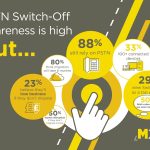In today’s professional landscape that embraces digital-first frameworks, individuals with disabilities regard speech-to text technology as an empowering resource.
What started as an accessibility tool is now a powerful technology that is redefining careers and transforming workplace dynamics for millions of people.
Breaking Barriers Word by Word
Remember when speech recognition was more comedy than convenience? Those days have long passed. Modern technology, with its multitude of innovations, has ensured that speech-to-text solutions achieve over 95 percent accuracy in numerous languages and dialects. Such advancements in technology change speech recognition from ‘helpful accommodation’ to ‘essential productivity tools.’
Speech recognition programs offer a sense of freedom to those suffering from mobility disabilities, dyslexia, or visual impairments. The simple ability to dictate communications and documents has transformed what is achievable in places where written communication is a necessity.
For marketers with mobility impairments, the implementation of speech recognition software has brought unprecedented increases in productivity. Tasks that once seemed agonizingly labor-intensive now appear effortless, signifying a paradigm shift in which disabilities recede, while innovation takes the forefront.
Beyond Basic Dictation
Today’s speech-to-text technology has evolved tremendously from traditional transcription. People with disabilities can now use these technologies to:
- Navigate entire digital workspaces through voice commands
- Contribute to collaborative documents in real-time during team meetings
- Generate accessible content with automatic captioning features
- Multitask effectively while drafting communications
These expanded functionalities aren’t just changing how work gets done—they’re revolutionizing who gets to participate. Fields that once presented insurmountable barriers are increasingly accessible, from documentation-heavy legal practices to creative industries dependent on rapid ideation and expression.
The Confidence Connection
Perhaps the most profound impact of speech-to-text technology isn’t measured in productivity metrics but in professional self-assurance. The ability to communicate independently and efficiently builds a foundation of confidence that many professionals with disabilities previously struggled to develop.
Consultants with dyslexia frequently describe the psychological transformation that accompanies speech-to-text mastery. The certainty of being able to capture and express thoughts without assistance reframes their sense of professional possibility and workplace belonging. This newfound confidence often translates into greater participation, leadership initiatives, and career advancement.
Challenges on the Horizon
Despite remarkable progress, speech-to-text technology still faces important challenges:
- Specialized industry terminology often confuses even sophisticated systems
- Environmental factors like background noise can significantly impact accuracy
- Dialectal and accent recognition continues to present obstacles for some users
The next evolution in this technology will likely center on contextual understanding—systems that recognize not just words but intention, allowing for more nuanced communication even in complex professional contexts.
The Collaborative Future
As remote and hybrid work models become permanent fixtures in our professional landscape, speech-to-text functionality is increasingly embedded in collaborative platforms by default. For professionals with disabilities, this integration represents the difference between partial and full participation in the digital workplace.
Conclusion: Amplifying Professional Voices
The true power of speech-to-text technology extends far beyond convenience—it fundamentally changes whose voices get heard in professional settings. As these tools continue evolving, they are not merely bridging accessibility gaps but completely redefining workplace inclusion.
For professionals with disabilities, this technology offers something invaluable: the ability to have their expertise recognized without the filter of their disability. And that translation might be the most important one of all.







